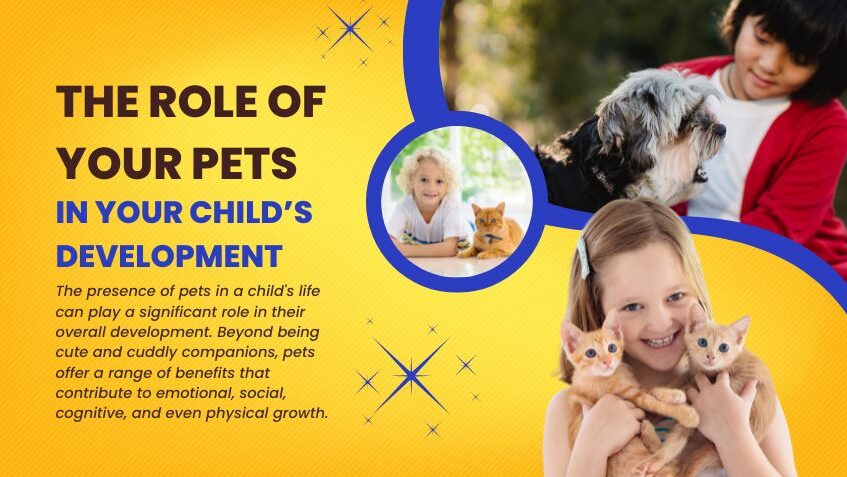The Role of Your Pets in Your Child’s Development
The presence of pets in a child’s life can play a significant role in their overall development. Beyond being cute and cuddly companions, pets offer a range of benefits that contribute to emotional, social, cognitive, and even physical growth. Here’s a closer look at the role of pets in child development:
Emotional Development:
Empathy and Compassion: Interacting with pets teaches children how to understand and respond to the needs and feelings of others, fostering empathy and compassion.
Emotional Expression: Pets provide a safe outlet for children to express their emotions and develop emotional intelligence.
Social Development:
Responsibility: Caring for a pet teaches children the importance of responsibility as they need to feed, groom, and look after the well-being of their furry friend.
Routine and Structure: Pets require consistent care, helping children establish routines and a sense of structure in their daily lives.
Communication Skills: Talking to pets helps children practice verbal communication, which can improve their language development and conversational skills.
Cognitive Development:
Observational Learning: Watching pets interact with their environment can enhance children’s observational and problem-solving skills.
Curiosity and Exploration: Pets spark curiosity in children as they observe their behaviors, leading to questions and a desire to learn about the natural world.
Physical Development:
Physical Activity: Playing with pets encourages physical activity, promoting healthy growth and development of motor skills.
Outdoor Exploration: Activities like walking dogs encourage outdoor exploration and provide opportunities for exercise.
Stress Reduction and Comfort:
Stress Relief: The presence of pets has been shown to reduce stress and anxiety in children, providing them with a source of comfort and emotional support.
Security and Attachment: Children often form strong bonds with their pets, providing a sense of security and companionship.
Learning About Life and Death:
Understanding Life Cycle: Pets offer a natural way for children to learn about the life cycle, including birth, growth, and eventually, the concept of death.
Building Self-Esteem and Confidence
Non-Judgmental Support:
Pets provide non-judgmental companionship, helping children build self-esteem and confidence without fear of criticism.
Therapeutic Benefits:
Animal-Assisted Therapy:
The presence of pets has been used in therapeutic settings to support children with developmental disorders, trauma, and emotional challenges.
It’s important for parents and caregivers to guide children in their interactions with pets, teaching them to respect animals, understand their needs, and ensure their well-being. While the positive impact of pets on child development is clear, it’s equally crucial to choose the right type of pet that matches the family’s lifestyle and commitment level.
In conclusion, pets offer children a myriad of benefits that contribute to their emotional, social, cognitive, and physical development. The lessons and experiences gained from pet interactions can shape children into compassionate, responsible, and well-rounded individuals who are better equipped to navigate the complexities of the world around them.
You may also visit – https://www.facebook.com/angkopparasahayop




